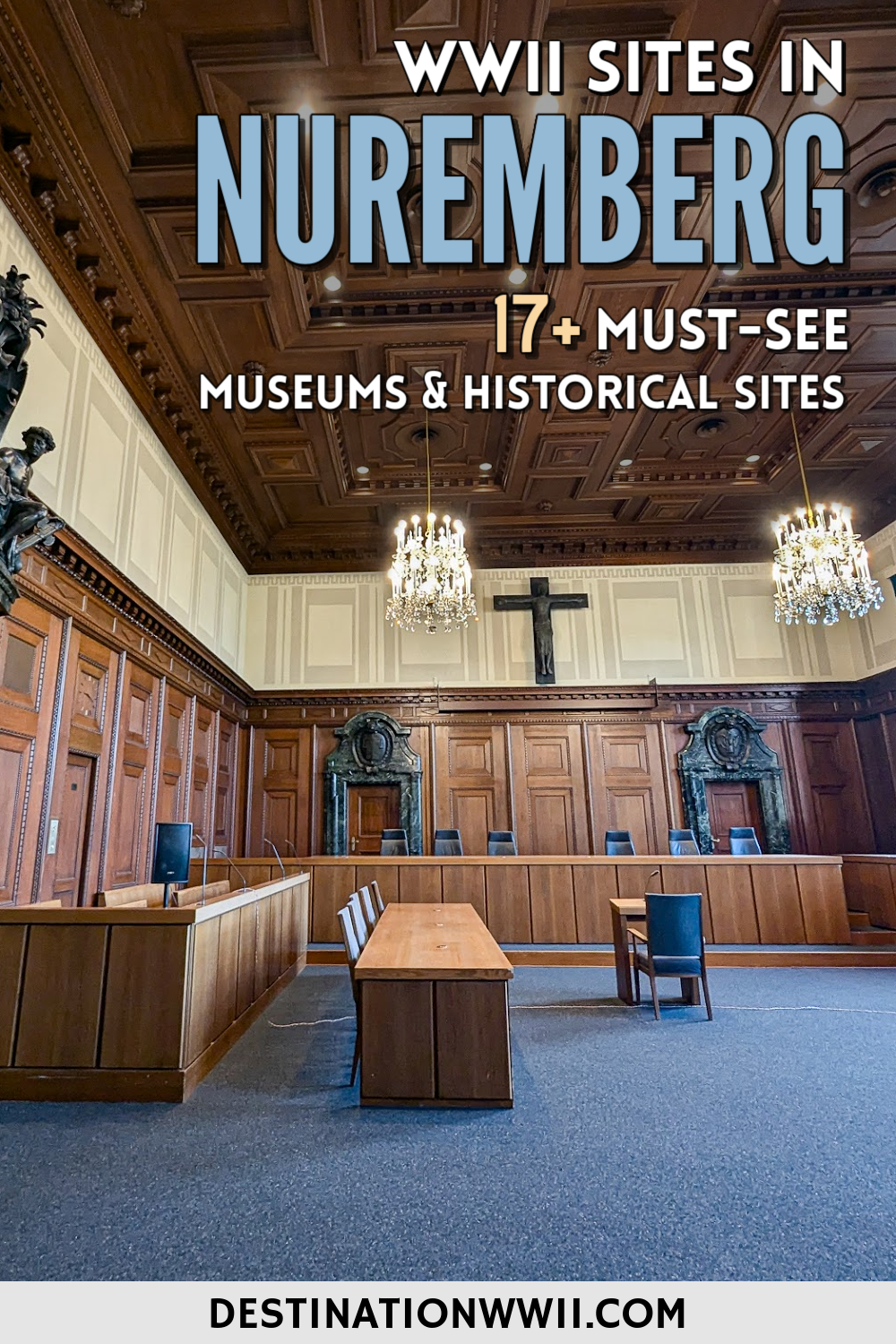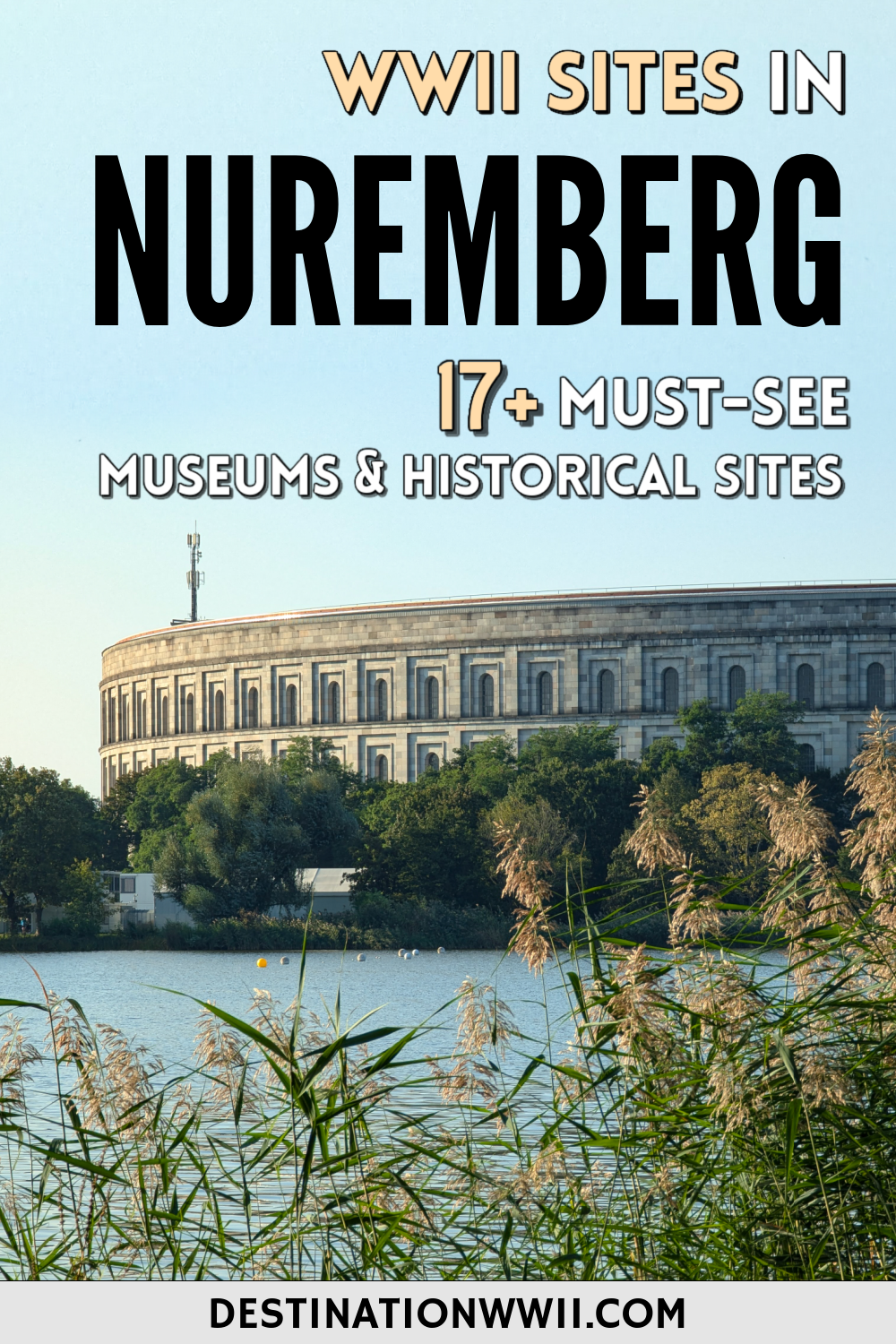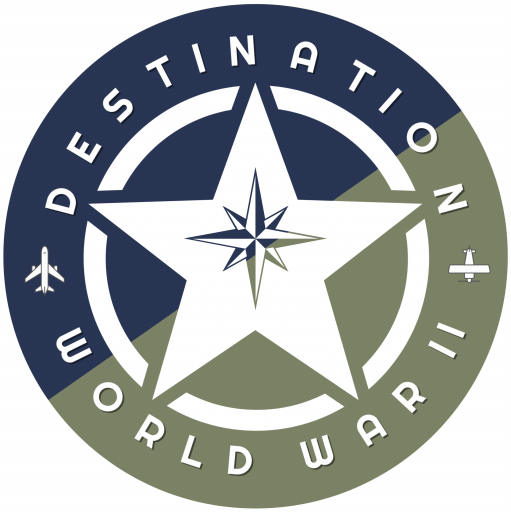Given the historical significance of this city, the WWII sites in Nuremberg, Germany are some of the most eye-opening I’ve ever seen. (If you get the chance to spend some time here, please don’t pass it up!)
This post contains a list of the unforgettable sites you shouldn’t miss here. It includes museums, monuments, and some of the most recognizable and larger-than-life historical sites.

World War II in Nuremberg
The city of Nuremberg played a huge role in the events of World War II. Here’s a brief summary of what you need to know about the city’s wartime history before you visit these WWII sites in Nuremberg:
Nazi Party rallies
Beginning in 1927, the Nazi Party chose Nuremberg to be the location of their massive rallies/propaganda conventions. From the grandstand at the Zeppelinfeld, Hitler and other top Nazis would shout their racist rhetoric at hundreds of thousands of brainwashed rally attendees.
They held their first rally here at the Nazi Party Rally Grounds in 1927. The next one occurred in 1929, and then annually from 1933 to 1938. No more rallies were held after the start of the war.

Nuremberg Laws
At the 1935 Nazi Party rally, Hitler passed the Nuremberg Laws. These laws consisted of two parts:
- The Law for the Protection of German Blood and German Honor which forbade relationships between Germans and Jews and also the employment of German women in Jewish homes
- The Reich Citizenship Law which stripped Jews and all non-Aryans of their German citizenship
These laws outlined what defined a Jew, and soon expanded to define Romani and black people. The Nazis considered all three to be “enemies of the state.” From this point on, anything considered “non-German” was to be destroyed—be it books, buildings, or people.
The Nuremberg Laws formed the foundation of what would snowball into the Holocaust. They marked the starting point of official, government-sponsored racial violence that resulted in the extermination of more than 6 million Jews and countless others. This was the beginning. It wasn’t when the concentration camps were built; it wasn’t a result of the war; it was this.

Also check out my post on the WWII Sites in Berchtesgaden, Germany (home of the Eagle’s Nest)
Absolute destruction
As a major Nazi hub during the war, Nuremberg also served as a military headquarters. Consequently, it became the target of several devastating Allied bombing raids in 1944-1945. What little the bombs spared, the Battle of Nuremberg further destroyed. Lasting from April 16-20 (1945), the US 7th Army fought what was left of Nazi Germany in some of the most brutal urban combat of the war.
All said and done, by the end of the war, about 90% of Nuremberg’s historic center and surrounding areas lay in ruins. This fact is a major theme you’ll see at all the WWII sites in Nuremberg.

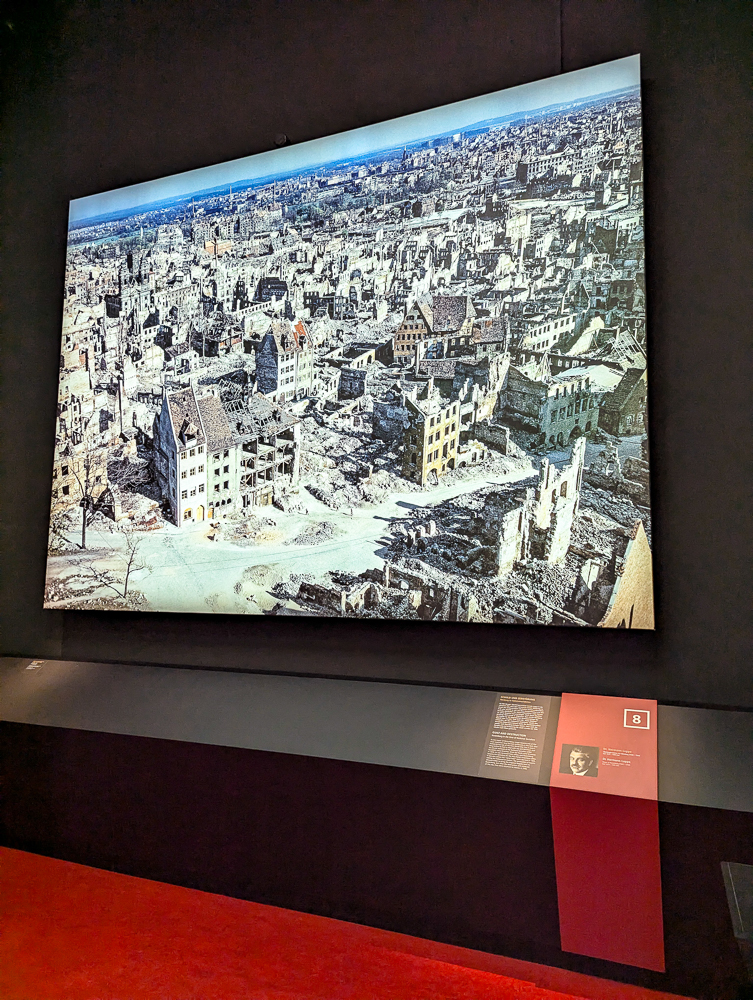
Nuremberg Trials
Following the war, the Allied powers held military tribunals in several cities during which they tried Nazi officials (and others) for their roles in the Holocaust (and beyond). The most famous of these war crimes trials took place in Nuremberg. You know them as the Nuremberg Trials.
Lasting from November 1945 to August 1946, the Allies tried 24 Nazi defendants for war crimes at the Nuremberg Palace of Justice. These defendants included some of the Nazi Party’s highest-ranking officials (who hadn’t committed suicide by this point), including:
- Hermann Göring – Hitler’s second-in-command and political heir
- Rudolf Hess – One of Hitler’s closest aides
- Wilhelm Keitel – Head of Germany’s armed forces
- Albert Speer – Minister of Armaments and War Production, and Nazi architect
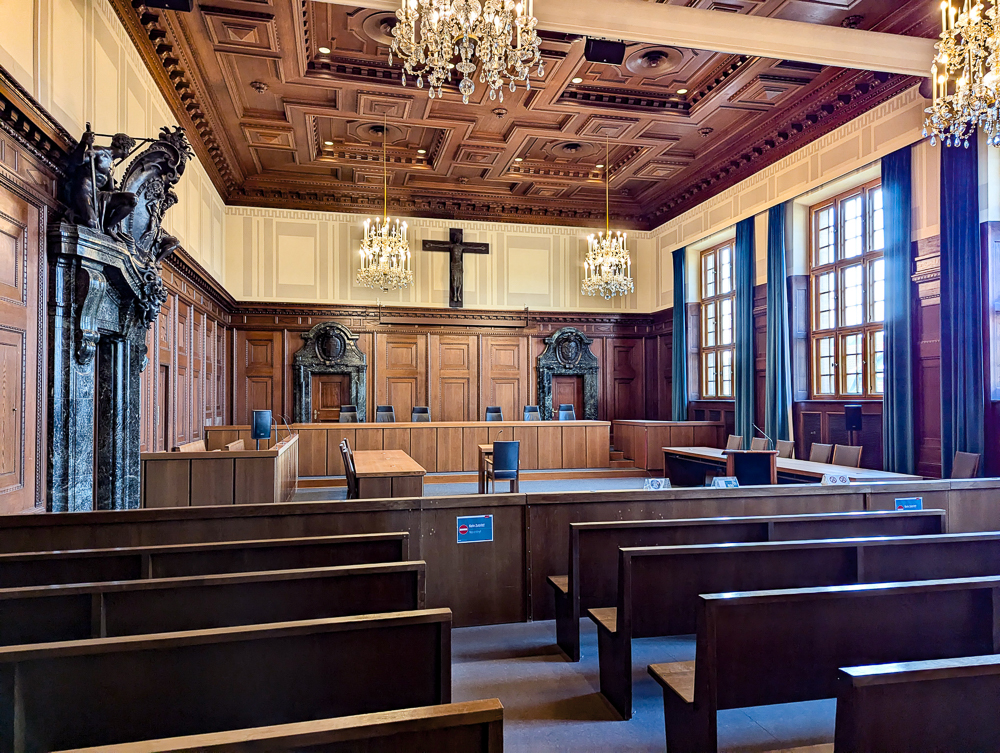
The crimes
The trials involved judges and prosecutors from the United States, France, Great Britain, and the Soviet Union. The charges included:
- Crimes Against Peace – In other words, “planning, preparation, initiation, or waging of a war of aggression, or of a war in violation of international treaties, agreements, or assurances.”
- War Crimes – Violating the laws of war; this includes things like murder or ill-treatment of prisoners of war, killing of hostages, plunder of public or private property, deporting civilians for slave labor, and “wanton destruction of cities, towns, or villages, or devastation not justified by military necessity” (to name a few).
- Crimes Against Humanity – Things like the murder/extermination/enslavement and other inhumane acts committed against any civilian population, or persecutions on political/racial/religious grounds, etc.
In the end, the judges convicted 19 of the 24 defendants of war crimes. Twelve were sentenced to death (and executed two weeks later), three were sentenced to life in prison, and four were given sentences up to 20 years. Herman Göring committed suicide in his cell ahead of his scheduled execution.
To learn more about the Nuremberg Trials and more such topics, I highly recommend the book Holocaust, Genocide, and the Law: A Quest for Justice in a Post-Holocaust World by Michael Bazyler.

Map of WWII sites in Nuremberg
This map contains all the WWII sites in Nuremberg I mention in this post. To save this map: Click on the star ⭑ next to the map’s title to save in your Google Maps. To use this map: When you get here, open Google Maps on your phone, click “Saved” at the bottom, then click “Maps.”
But first, get a Nuremberg Card
For visiting the WWII sites in Nuremberg (and pretty much everything else there is to see and do here), I highly recommend picking up a Nuremberg Card. This pass costs just $35 and includes free admission to all the sites listed in this post (and a 50% discount on the bunker tour) and tons more Nuremberg sites too.
It also includes free travel on Nuremberg’s public transportation network. From the town center, you’ll need to take the train to both the Nuremberg Trials Museum and the Nazi Party Rally Grounds. With this pass you won’t have to deal with tickets at all; just hop on the train.
Each person in your party will need their own Nuremberg Card and they’re good for a full 48 hours. You’re welcome to visit as many sites and take as much transportation as you want.
Tourismus Nürnberg provided me with a Nuremberg Card for my two days here in September 2024 and, in that time, I visited 10 museums and took 4 train trips with it! Without the Nuremberg Card, I would have had to pay $86 for all that.
Pick up your Nuremberg Card here
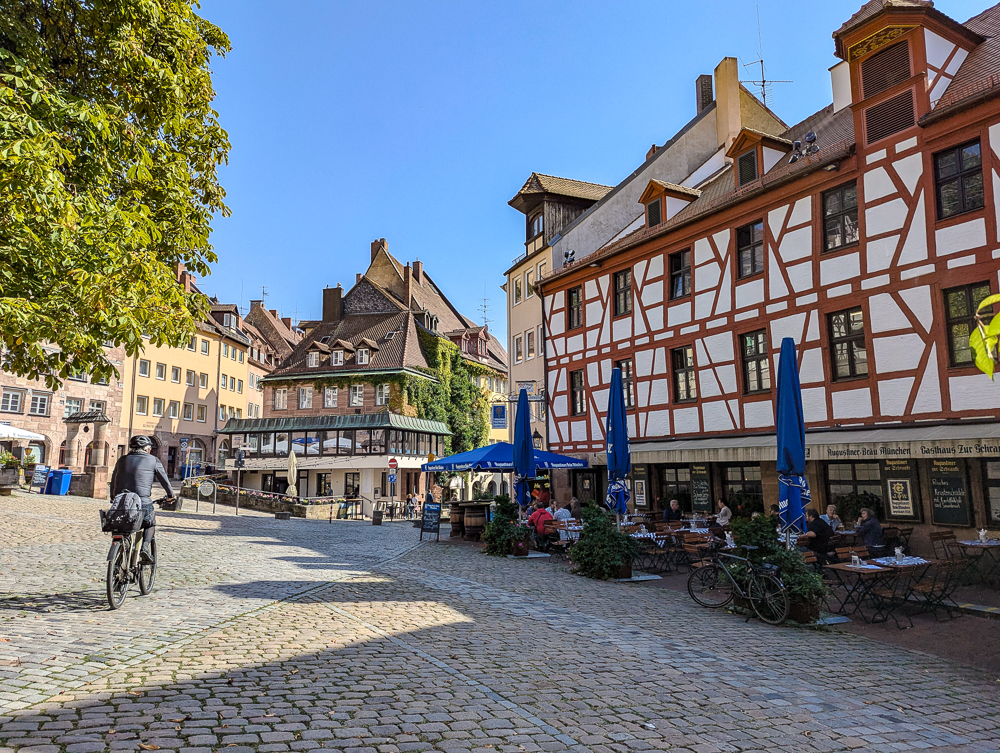
In the meantime, here’s the list of WWII sites in Nuremberg you shouldn’t miss on your next visit:
1. Courtroom 600
Visiting the Nuremberg Palace of Justice today rewards you with two of the most unforgettable WWII sites in Nuremberg. The first of which is Courtroom 600.
Courtroom 600 is the very courtroom where the Nuremberg Trials took place. This courtroom was used for trials continuously until 2020. Now, it mainly survives as a site of memory for visitors like us.
When you arrive at the Palace of Justice, check in at the desk and pick up an audio guide in your preferred language. Your tour of this historic building begins in Courtroom 600 and the guide will tell you everything you need to know about it.
Your admission to the greater Nuremberg Trials Museum also includes admission to Courtroom 600 and the audio guide. (But free with your Nuremberg Card!)
The charge of Crimes Against Humanity didn’t exist prior to the Nuremberg Trials. It was here, during the International Military Tribunal, that this new crime was prosecuted for the first time.

2. Memorium Nuremberg Trials
The Memorium Nürnberger Prozesse is the Nuremberg Trials Museum at the Palace of Justice. After spending some time inside Courtroom 600, you’ll then continue on to the permanent museum exhibition. You’ll learn everything you could possibly want to know about the Nuremberg Trials here.
Exhibits within the museum cover all topics, including: visual explanations of who the defendants were, their charges, and their fates; members of the prosecution; explanation of the charges and crimes; the legal processes; how the course of the trial played out; explanations of the penalties; the trials as a worldwide media event; explanations of some of the most important documentary evidence; and much more.
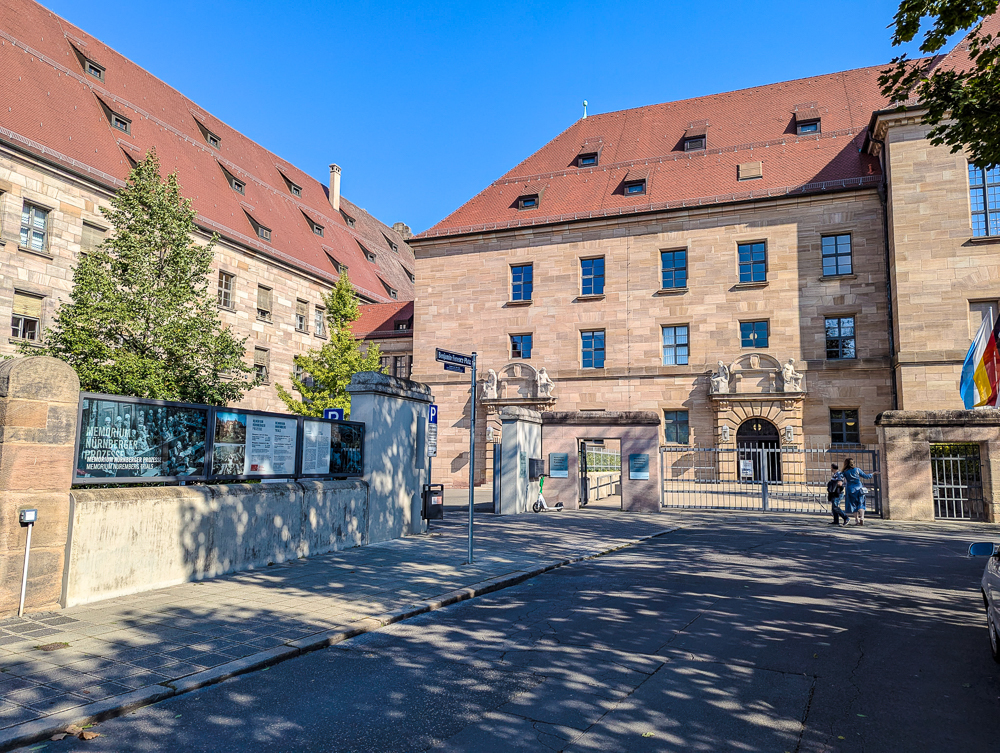
You’ll also get to see some interesting original artifacts including a wooden crate used to transport trial documents and the original defendants’ benches
As is common in many German WWII museums, the majority of panels here show only German text (but you can listen to them in English with the audio guide). The museum recommends to plan about 1.5 hours here, but I devoured every bit of the audio guide and spent two hours here. So, plan accordingly if this is a topic that really interests you (like it does me).

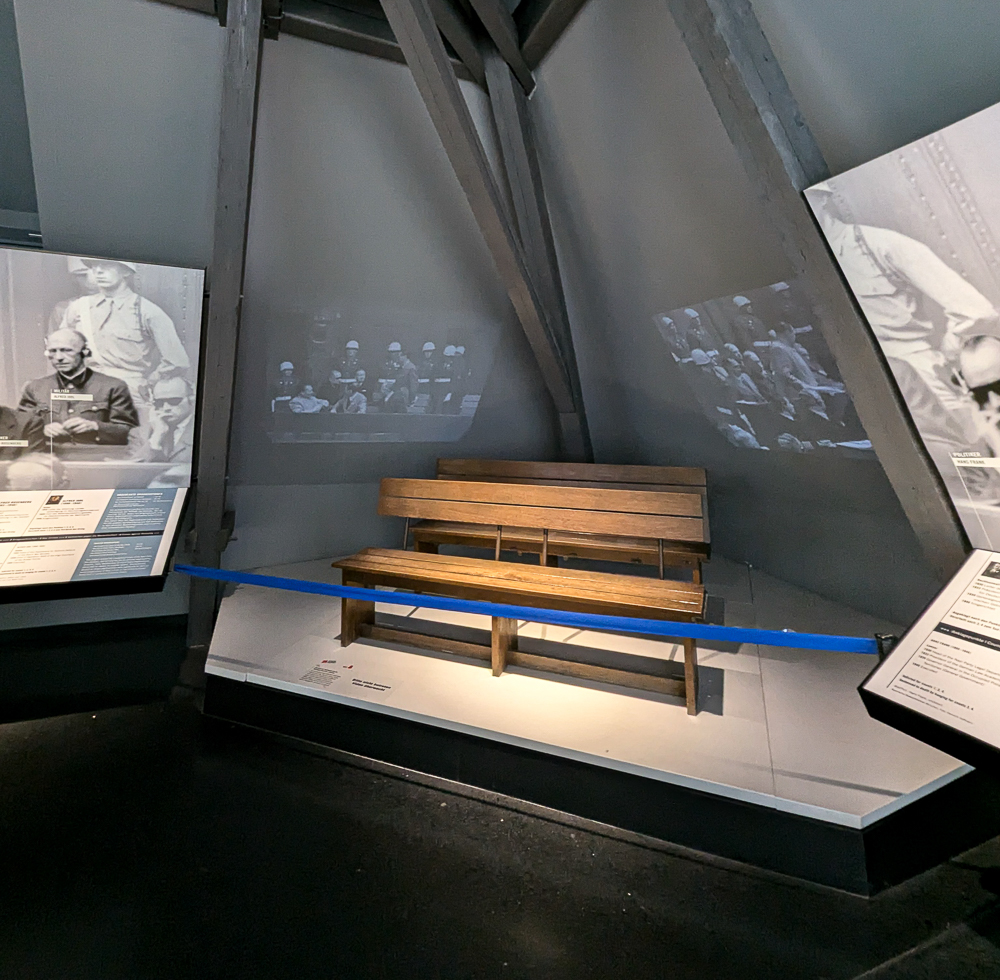
3. Historischer Kunstbunker Tour
One of the more unique WWII sites in Nuremberg is the Historischer Kunstbunker Tour. This guided tour takes you beneath the city’s historic center into the “art bunkers” where authorities hid some of Europe’s most priceless treasures during the war.
By the time World War II began, Nuremberg already had a vast network of underground tunnels and bunkers, most dating back to medieval times. Though not originally built for this purpose, they soon discovered these tunnels were the safest spots in Nuremberg and the only place safe from the bombings.

Tons of priceless works of art were moved here and hidden for the duration of the war. Today, you can tour these tunnels and learn all about them. And, everything down here is original—the doors, the walls and supports, the offices, even the toilets and electrical units.
I found this tour to be so fascinating, especially since some of the treasures hidden here were pieces I’ve actually seen in person in Poland and Germany. Tours last about 1 hour and take place several times each day. Tours are offered in German and English (and several other languages by request), so make sure you choose the right language before you pick a time.

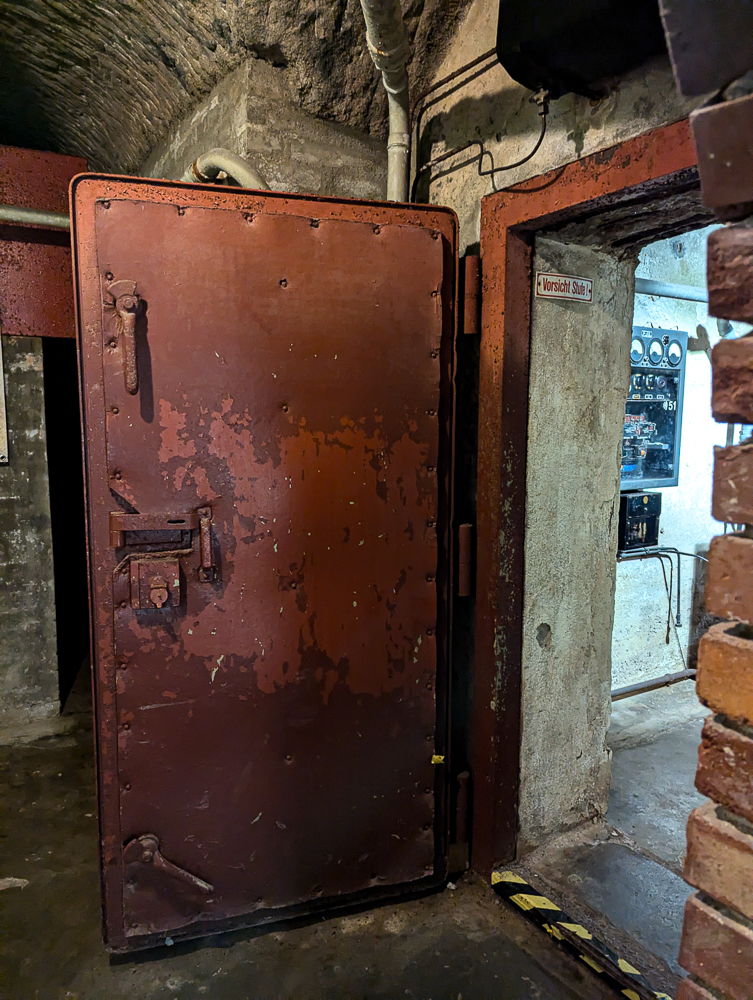

4. Nazi Party Rally Grounds
The most well-known of all the WWII sites in Nuremberg is without a doubt the Nazi Party Rally Grounds. (It’s also the physically largest.) The Rally Grounds consist of a whole collection of sites you can visit, but for the sake of brevity I’m only going to mention a few of the most accessible ones. (I have the full list of them coming soon in a post of their own – subscribe here so you don’t miss it.)
5. Documentation Center Nazi Party Rally Grounds
The first stop on your visit here should be the Documentation Center at the Kongresshalle. Here, you’ll find a permanent museum exhibition on the history of the Rally Grounds and more about the Third Reich. Plan to spend about 45 minutes here listening to the material and checking out the panels and artifacts.

The informative panels here present the text in both German and English. You can also listen to all the panels via their free audio guide which you can listen to on your own phone. (You can even listen to them now if you want, from wherever you are.)
The Documentation Center is currently under renovation, with plans to reopen sometime in 2026. In the meantime, they’ve set up a temporary museum exhibition in the Large Exhibition Hall across from the ticket building. You can find more visitor information and updates here: museums.nuernberg.de/documentation-center.


6. Kongresshalle
After your time in the Documentation Center, you can head outside to where you’ll find a special viewing area inside the Kongresshalle. The Kongresshalle is the massive Colosseum-looking building where you’ll also find the Documentation Center.
Originally intended as the “centerpiece” of the Nazi Party Rally Grounds, the Kongresshalle was never actually completed and has sat mostly abandoned since. Unfortunately, visitors can’t go inside, and there’s currently a major construction project taking place in the center. But, they have created a small viewing area so you can still take in the massive scale of this structure.
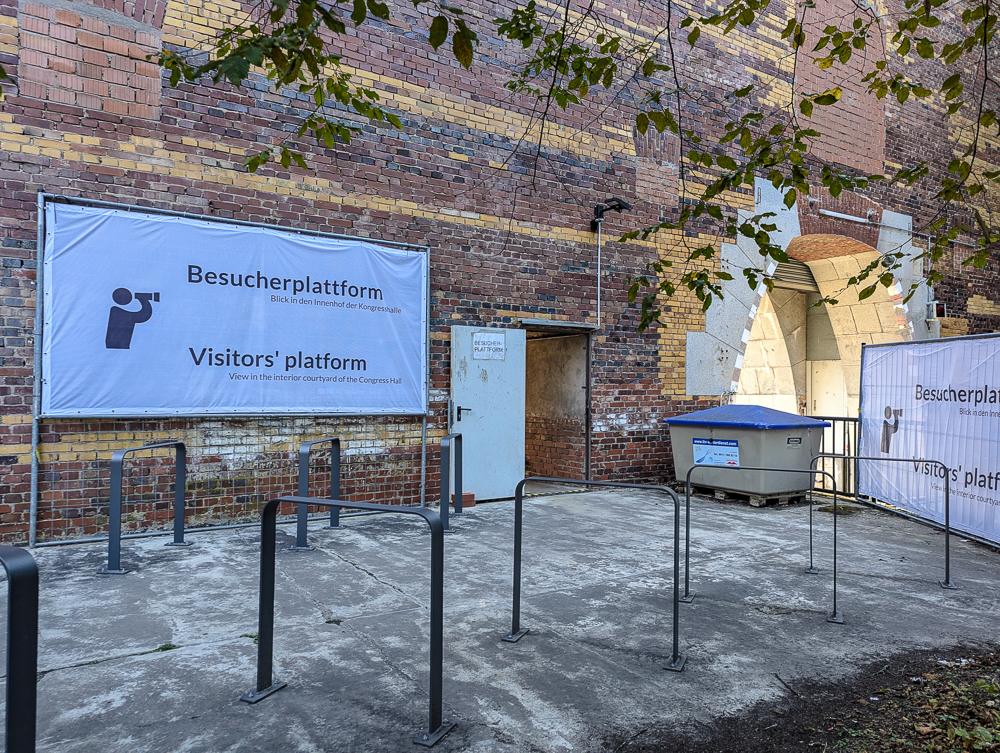
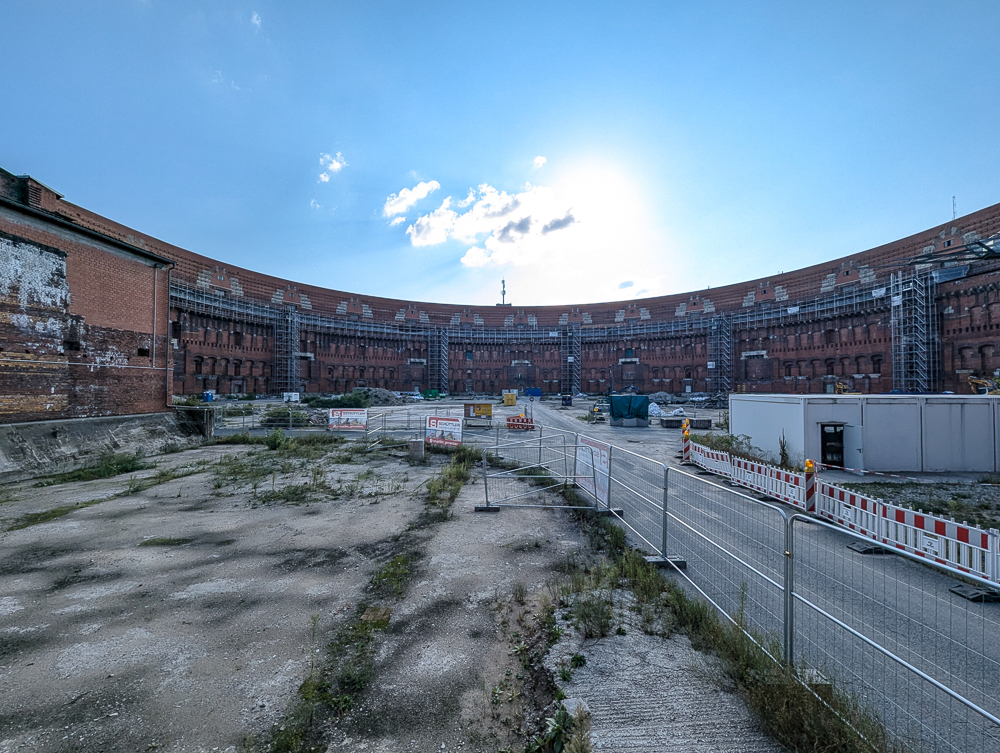
7. Zeppelinfeld / Grandstand
One of the most chilling WWII sites in Nuremberg is the Zeppelin Field and what’s left of the grandstand. This is where the Nazi Party held its massive propaganda rallies. And it was this grandstand where Hitler stood and screamed his tyrannical rhetoric to hundreds of thousands of supporters at a time. The Zeppelinfeld also served as a parade ground during these rallies.
These two structures were the only parts of the planned Nazi Party Rally Grounds to actually be completed. For their time, these structures exuded massive power, strength, and influence. They also served as the setting of filmmaker Leni Riefenstahl’s famed 1935 Nazi propaganda film Triumph of the Will.

The scene today couldn’t more the opposite—overgrown weeds, crumbling structures, and neglect all around you. It’s quite poetic, actually. The grandstand’s colonnade is long gone and only the relatively small center façade remains. In April 1945, the US Army ceremoniously blew up the enormous swastika that once topped the grandstand. (Probably my all-time favorite piece of historical film footage.)
That all said, standing here in the same spot where Hitler stood is eerie beyond words. The steps and podiums of the remaining structure are all open. I encourage you to climb up here yourself; imagine the scene of a Nazi Party rally; and do some hard thinking about the dangers of ultranationalism, megalomania, far-right viewpoints, and how easy it’d be to fall back into old patterns when these traits aren’t recognized early enough.
You can (and should) watch Triumph of the Will here on AppleTV or for free on the Classic Film Time app if you have Roku.
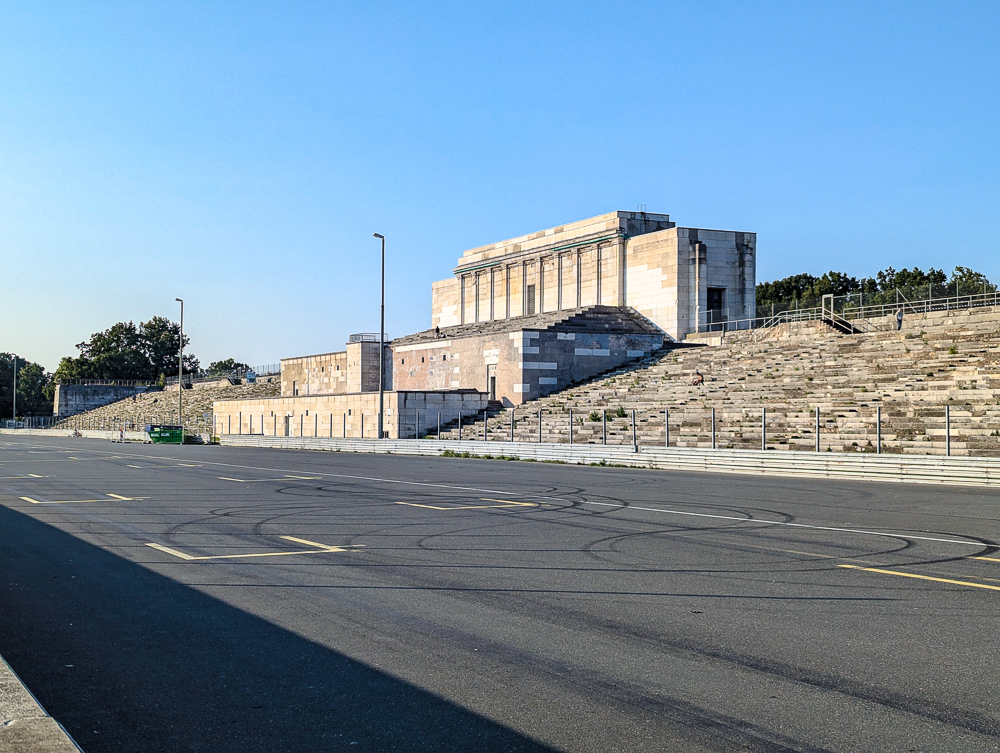

8. Great Road
Another of the most impressive WWII sites in Nuremberg is the Great Road at the Nazi Party Rally Grounds, sometimes called the Great Avenue. Nazi architect Albert Speer intended his proposed marching ground to lead 1.2 miles (2km) away from the Kongresshalle and stretch almost 200 feet (60 meters) across.
Only about 1.5km of it was completed before the war began—paved with 60,000 granite slabs. Today, it’s little more than a vast empty road. Some parts are used for parking, some for driving. Though there isn’t much to see here, the scale of it is still impressive. Besides, just like the Zeppelinfeld and grandstand, the desolation of it is the story we came to hear.
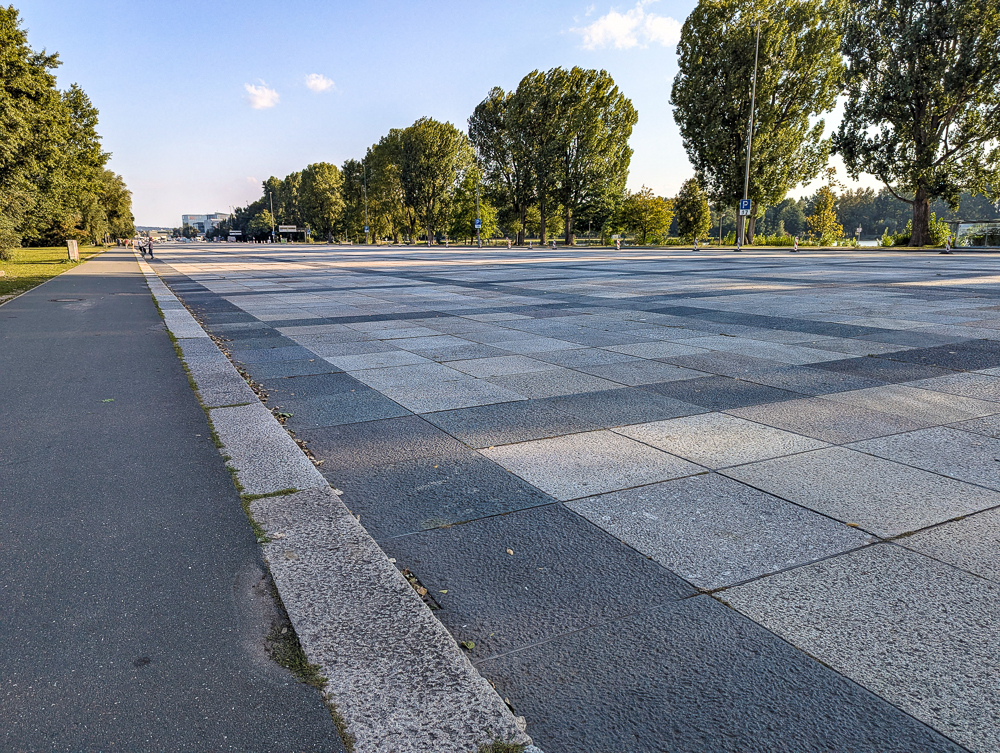
9. Hall of Honor
The Memorial Hall at the Nazi Party Rally Grounds was actually built pre-WWII to honor the Nuremberg soldiers killed in WWI. Naturally, the Nazis commandeered it to serve their own propagandistic purposes—as a tribute to the “Martyrs of the National Socialist Movement.”
The Hall of Honor still stands today, but as a general memorial to the fallen soldiers of both World Wars I and II, and to all victims of Nazi tyranny. It’s surrounded by a big beautiful green park and mostly hidden by large trees.

10. German Railway Museum
Nuremberg’s German Railway Museum chronicles the lifespan of Germany’s national railway—the Deutsche Bahn (originally the Deutsche Reichsbahn). Naturally, that includes the history of Germany’s rail system throughout the National Socialist years and its role in the Holocaust. And that’s why we’re here.
Don’t get me wrong, if you love trains and niche history, you could spend an entire day here. (Really, this place is massive. I got incredibly lost several times. At one point I ended up inside an Egyptian tomb which I still can’t explain.) Or you can simply focus on the wing that details the role of the Reichsbahn in the Nazi’s “Final Solution.”
The displays here are incredibly well-done, but are (unsurprisingly) only in German. (The displays that tell good stories about the DB are also in English. Coincidence? I’ll let you be the judge.) Be sure to come armed with your translator app.
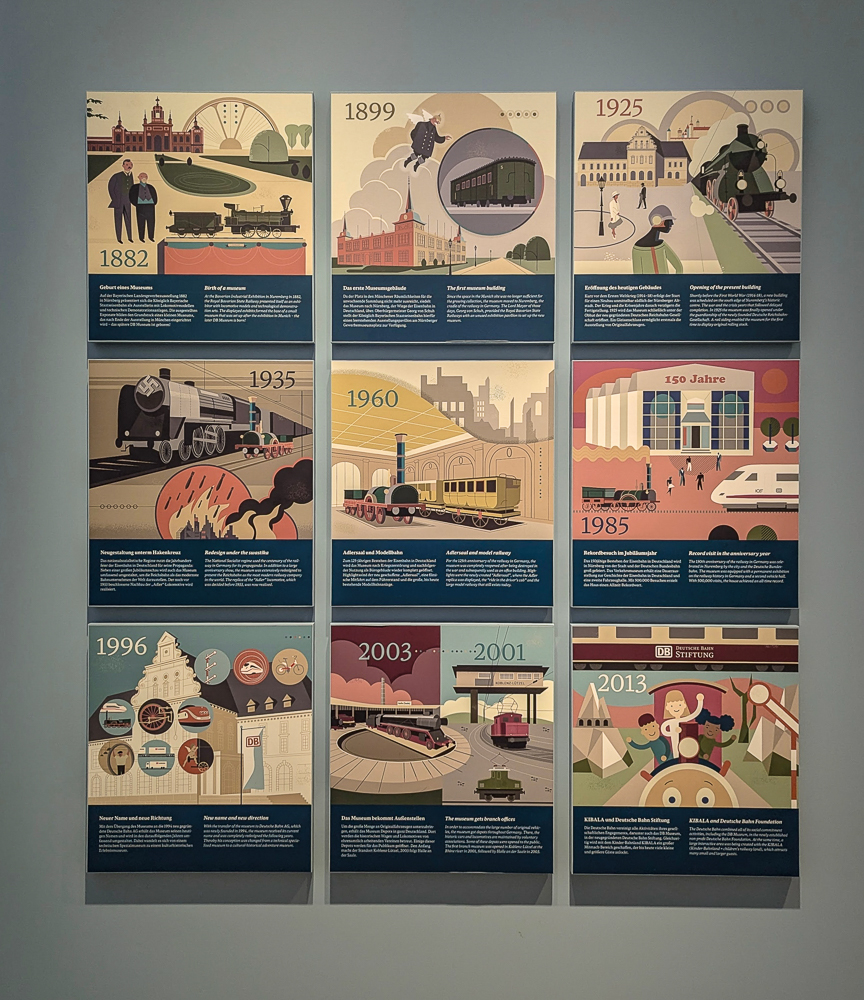
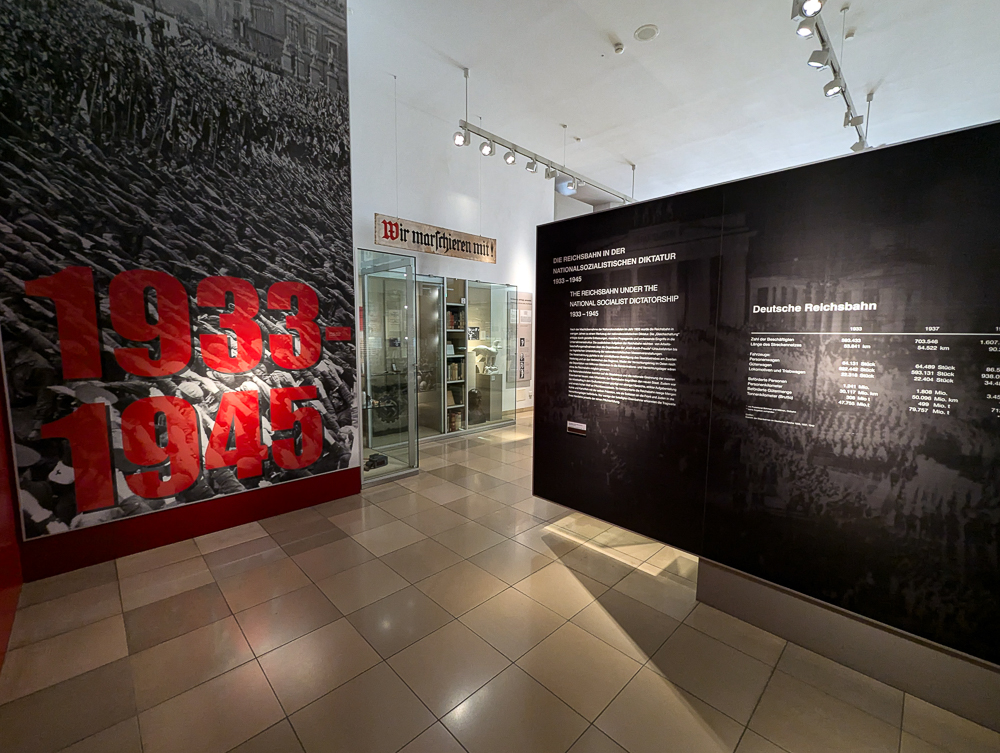

11. Street of Human Rights
Passing in front of the Germanisches Nationalmuseum is the Way of Human Rights. In their own words, “The ‘Way of Human Rights’ is both an indictment of the crimes against humanity committed by the National Socialists and an admonition carved in stone to all people reminding them that human rights are still violated in many states all over the world.” [source]
More concretely, it’s a block-long monument consisting of an entry portal and 27 stone columns, each one inscribed with one of the articles from the Universal Declaration of Human Rights in both German and another language. At the start of it, there’s a metal panel on the wall of the building that explains each one.
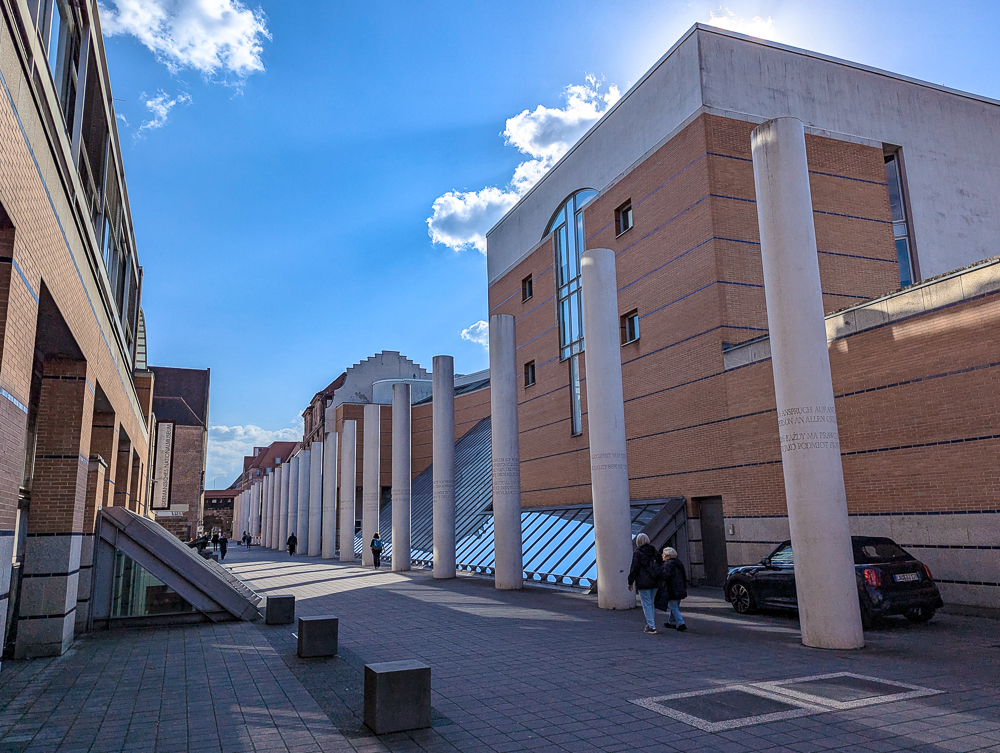
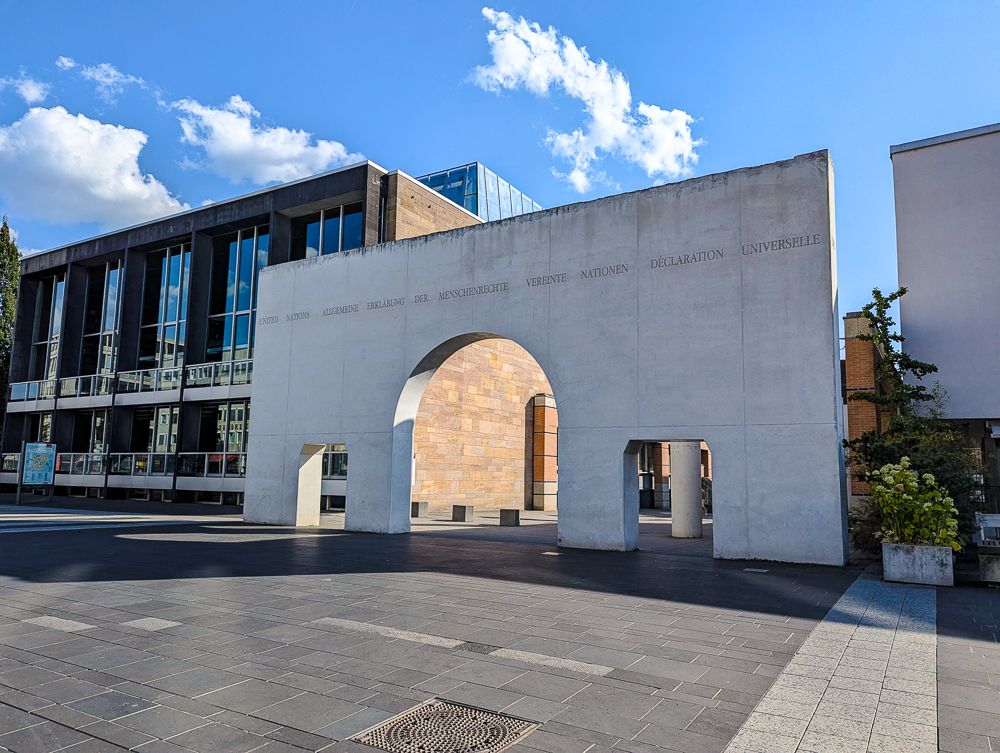

12. Main Synagogue Memorial
Nuremberg’s main synagogue dated back to 1874 and survived until 1938 when Nazi authorities demolished it ahead of Kristallnacht. Today, there are a couple of memorials on the spot where the synagogue once stood.
One consists of a large stone slab with a relief of the former synagogue and the other features a stone memorial inscribed with a Star of David on the front, and at the top contains basically the same information I just shared about it above.
To the left of the synagogue memorial you’ll find another—a bronze plaque dedicated to Leo Katzenberg, chairman of Nuremberg’s Israelite community. It explains how he was arrested and charged under the Nuremberg Laws, convicted without guilt in a show trial, and executed as a victim of Nazi racial justice.
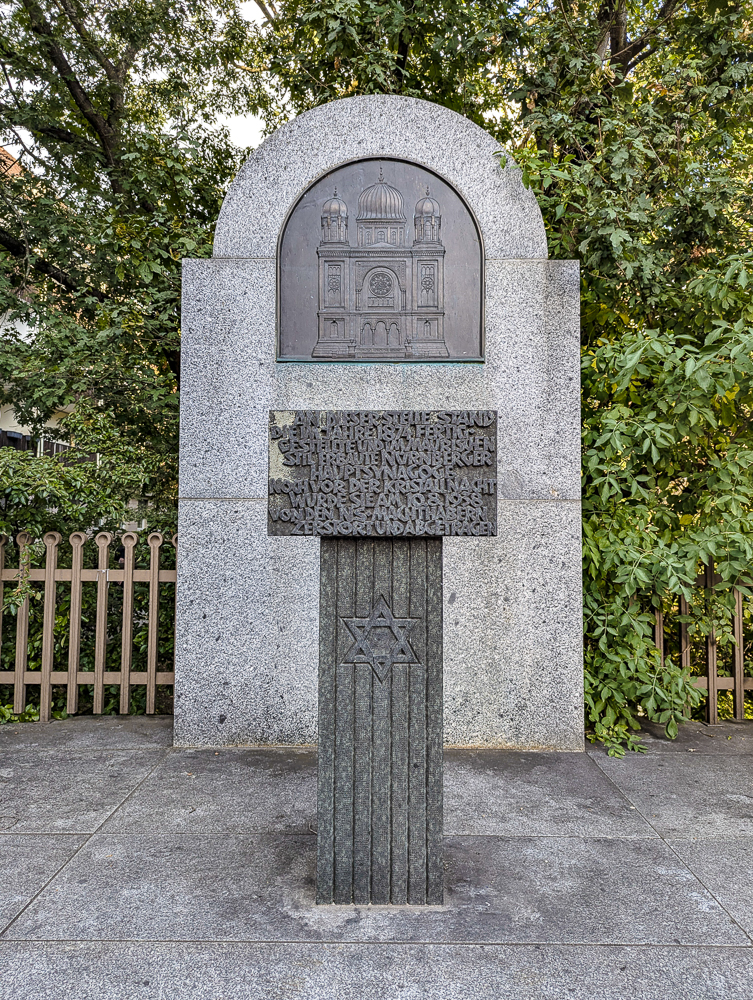
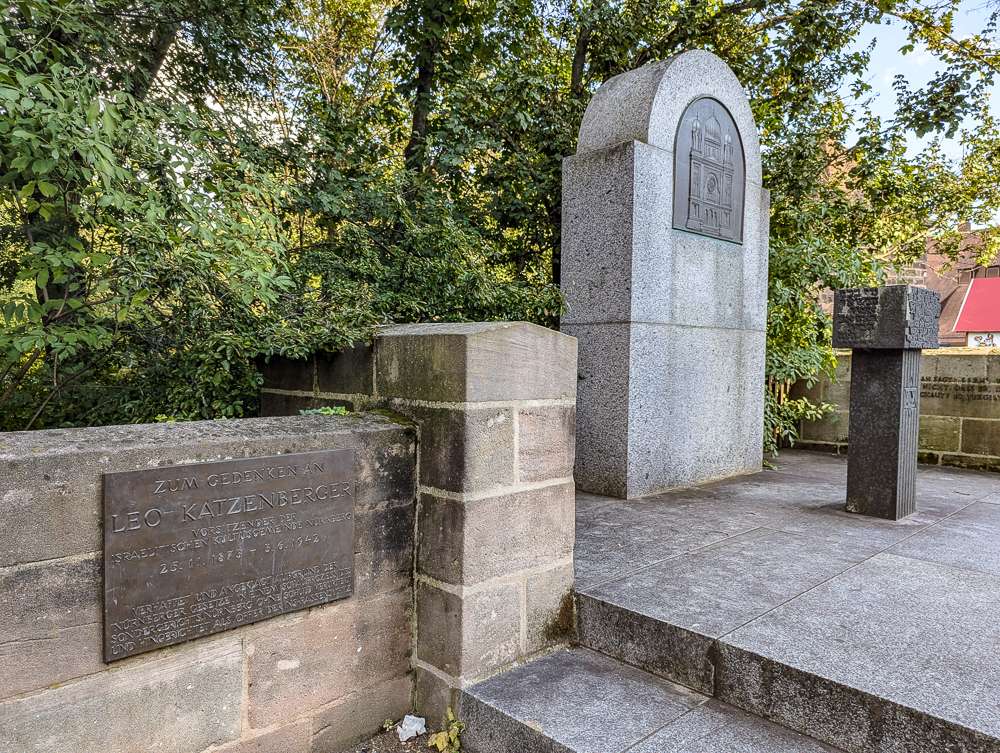
13. Stumbling Stones
All over Europe you can find small brass memorials to Holocaust victims inlaid in the ground outside their last known residences. These Stumbling Stones (Stolpersteine in German) typically contain the person’s name, birth and death years, and their fate (what camp they died at, etc.).
Only the cities of Paris and Munich have declined these memorials. But in Nuremberg you can find them in several places. This page provides a map of all the stumbling stones in Nuremberg along with location details and a biography of the victim(s).
There are several stumbling stones within the historic center of Nuremberg so either find one nearby on the map or simply keep your eyes pointed downward while you’re out exploring.
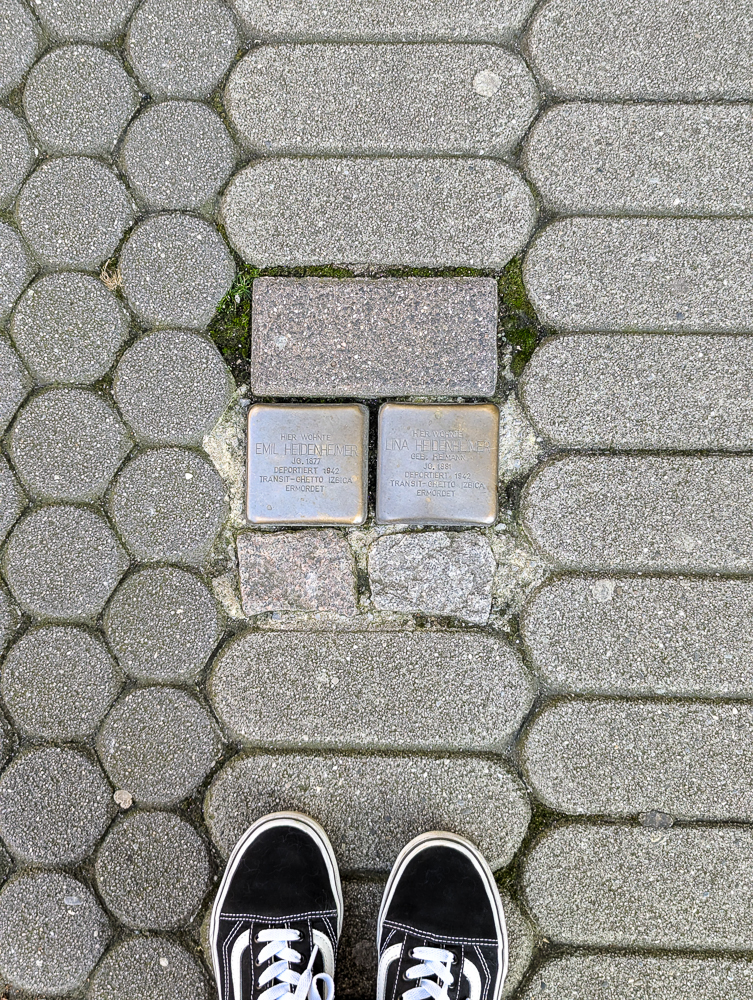
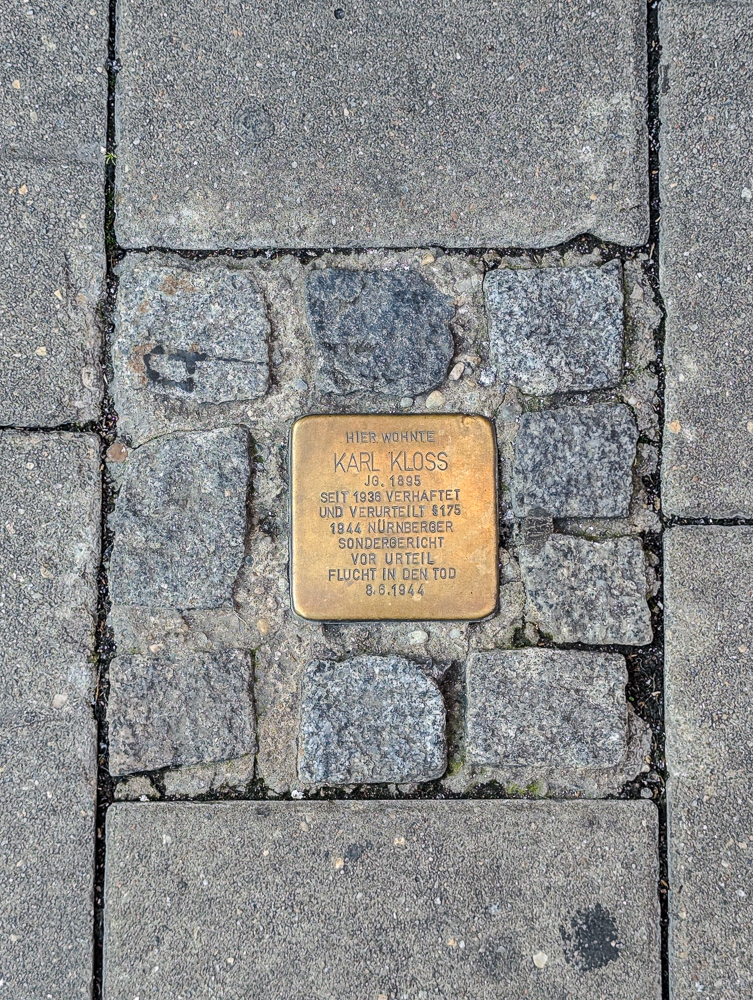
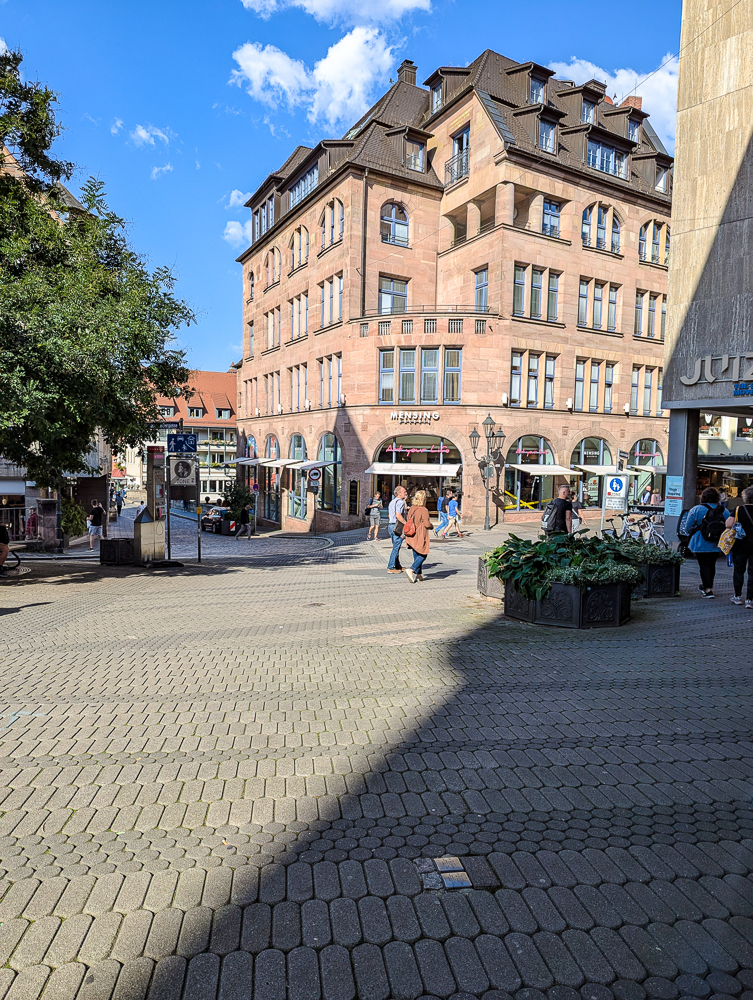
WWII Sites in Nuremberg – Honorable Mentions
The WWII sites in Nuremberg I’m about to highlight aren’t entirely dedicated to war history, but you’ll still find plenty of it at each of them. The following are some of the most popular tourist sites in the city, so if you find yourself visiting any of them, be sure to stay on the lookout for the WWII history I’m about to show you.
14. Germanisches Nationalmuseum
This museum is known as the “largest cultural history museum in the German-speaking world.” In it you’ll find several floors of exhibits on everything related to German history, spanning from prehistoric times to today. (Its biggest draw is that it has the world’s oldest globe.)
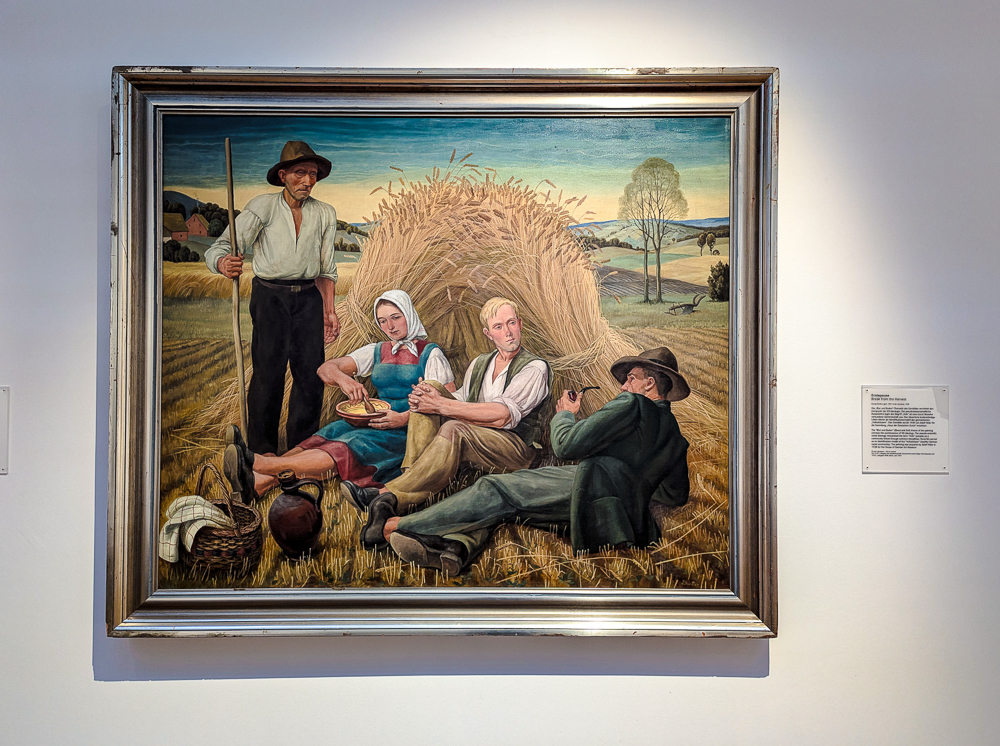
In terms of WWII history, this museum has some interesting exhibits entirely dedicated to historical art collections. For instance, you can see several Nazi-commissioned paintings used to push its romanticized “Blood and Soil” ideology.
You’ll also learn a ton about how art was used during the Nazi period—for better and for worse. How the Nazis persecuted and prosecuted artists, and how art changed throughout the Second World War due to restrictions placed on artists. This museum also displays some memorial sculptures from the Ravensbrück concentration camp and more Holocaust-inspired art.

15. Nuremberg City Museum
Also known as the City Museum in Fembo House, the Nuremberg City Museum covers tons of interesting history from the city of Nuremberg. It’s housed in a historic house that was miraculously spared from total destruction during the war.
In addition to several floors of exhibition space, there are a couple of spots that will interest WWII historians. One of those is a room where you can take a virtual tour of the original Nuremberg synagogue. (The one the Nazis destroyed in 1938.)
The other is in the separate exhibition room (just across the little courtyard outside). This exhibit is titled “The Crown – Power – History” and it sums up Nuremberg’s history in a quick little tour. In this building you can learn about how the Nazi regime shaped Nuremberg and how the city fared as a result.
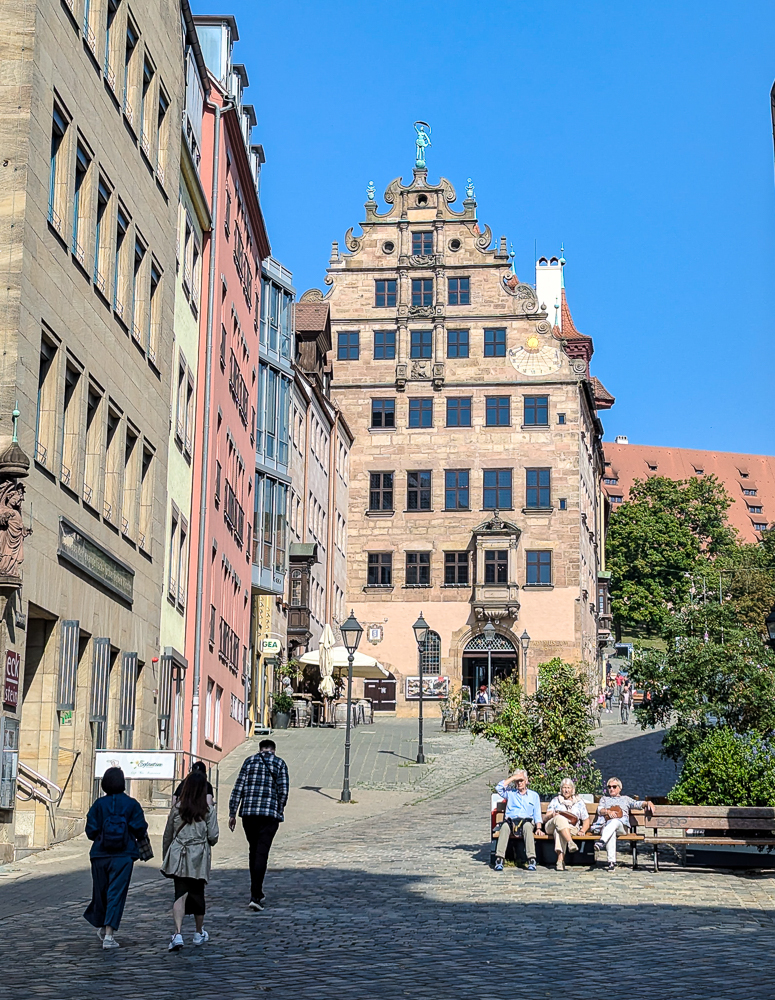


16. Nuremberg Castle
The Imperial Castle of Nuremberg is one of the most popular attractions here (and definitely #1 among non-WWII buffs). This expansive fortress has been sitting high above the city for a thousand years, back when Nuremberg was one of the most important cities of the Holy Roman Empire.
So, naturally again, the Nazis helped themselves to it when the time came, as they did everything else. They completely renovated parts of the castle in the preferred Nazi style and to accommodate any future important guests. (And to serve as an “honorary residence” for Hitler, whatever that means.)

By the war’s end, most of the original castle had been destroyed by the bombings, though some important sections remained untouched. After the war, the city of Nuremberg rebuilt the castle to its pre-war specifications. Ironically, the same man who renovated it for the Nazi Party in 1934 (Rudolf Esterer) also completed its postwar reconstruction.
While visiting Nuremberg Castle today, you can find several informative panels that explain this history along with pictures that show what it looked like during the Nazi era. Climb to the top of the castle’s Sinwell Tower and you can see photos of what the castle looked like after the bombings and learn more about its destruction and reconstruction.
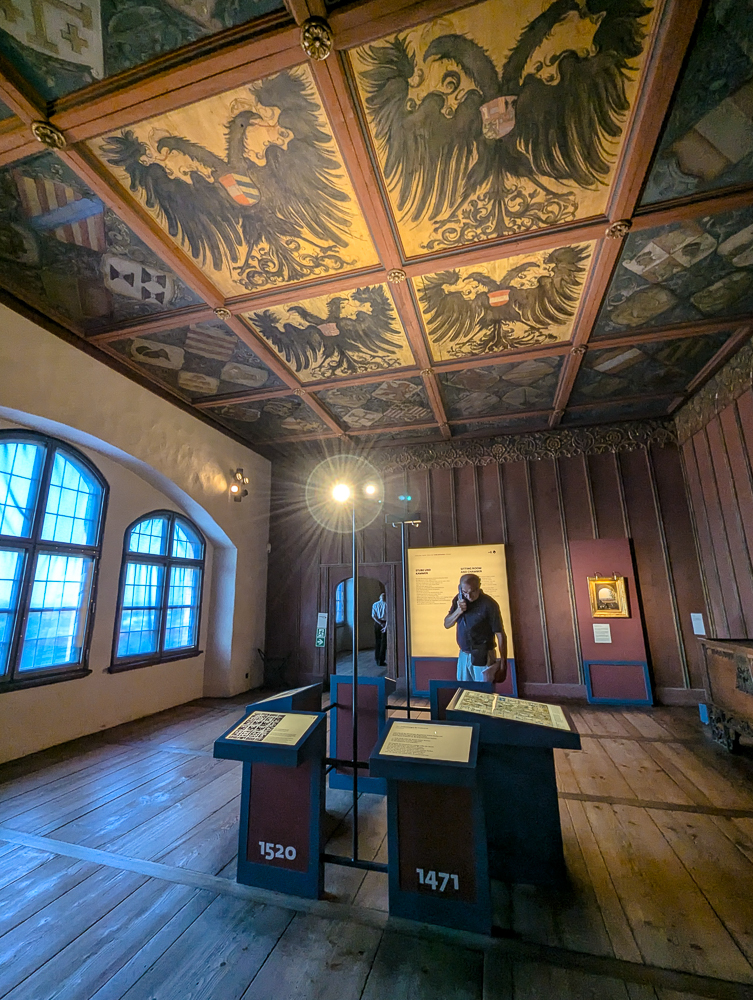
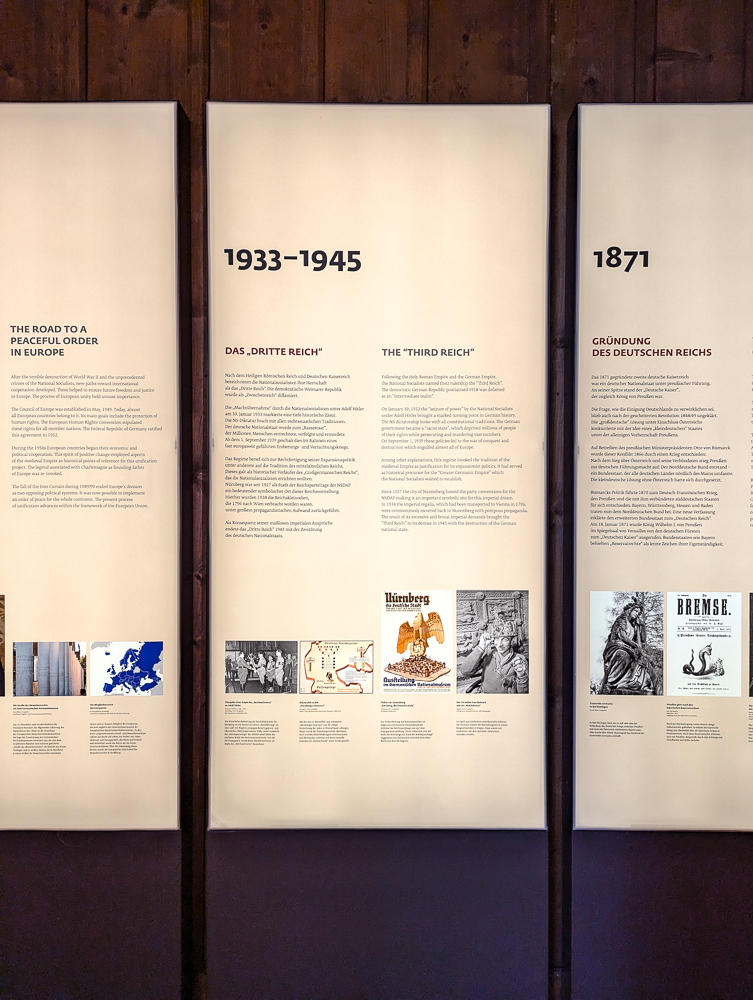
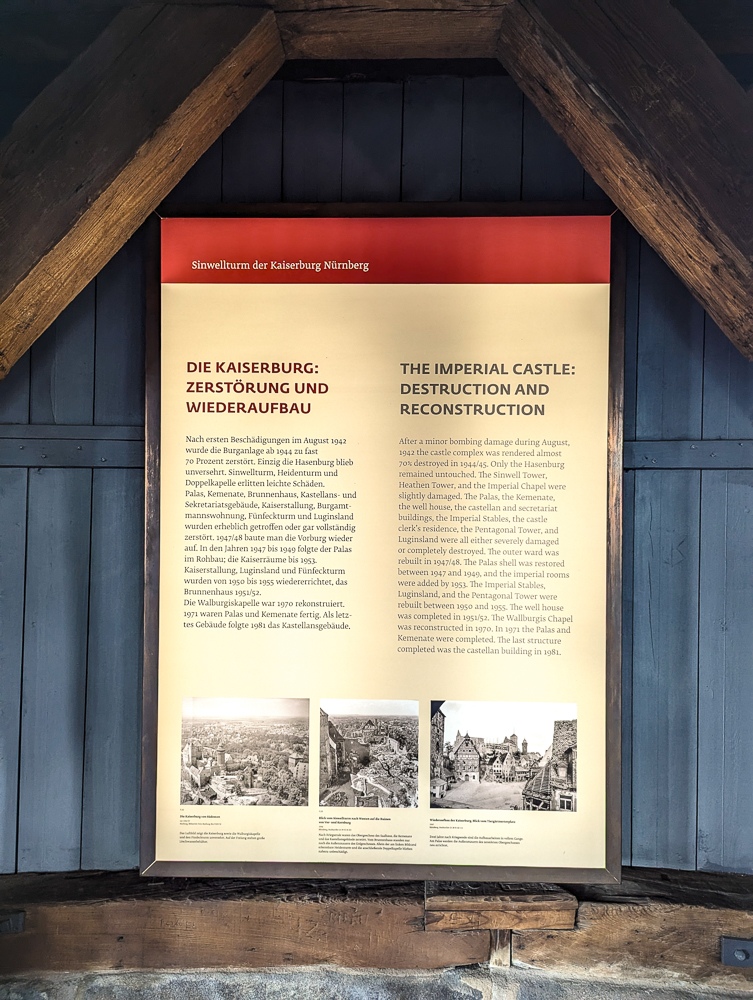
17. Bratwurst Museum
One of the more interesting stops I made in Nuremberg was the Bratwurst Museum. (I had just spent the night at a Bratwurst hotel, so a visit here seemed fitting.) This small museum focuses on the city’s bratwurst history during which, of course, the Nazi Party makes an appearance.
A large portion of this museum focuses on the Bratwurstglöcklein—a historic sausage kitchen that operated nearby from the 1300s until the Allied bombings destroyed it. This place was world famous and everyone who came through Nuremberg dined here.

One of the more interesting artifacts at the Nuremberg Bratwurst Museum are copies of the original Bratwurstglöcklein guestbook. Flip through these pages and you’ll see tons of messages written during the Nazi period. Some talk about sausages, some about the war, but all of them follow the particular theme of the times.
The translator app on my Google phone is able to translate these handwritten pages for the most part. Otherwise, ask the person working there if he/she can translate for you. (The staff here is so nice and happy to help!)

Nuremberg World War II tours
Nuremberg is an incredibly easy city to navigate and most of these sites are within walking distance of each other. However, if you’d prefer to have a guide show you around, take a look at these popular Nuremberg WWII tours:
- Nuremberg WWII Tour, Courtroom 600 and 3rd Reich Sites – Includes pickup/drop off at your hotel, private transportation, and your own expert guide.
- Third Reich, Nazi Propaganda, Nuremberg Trials Private Tour – Choose from either a 3-hour or 5-hour tour that focuses on the major WWII sites in Nuremberg
- Nuremberg Private Walking Tour: Old Town and Nazi Rally Grounds – Private tour for just your group that includes your own private guide to show you around the two most significant parts of Nuremberg
- Walking Tour of Former Nazi Party Rally Grounds – No frills 5-star walking tour of just the Nazi Party Rally Grounds
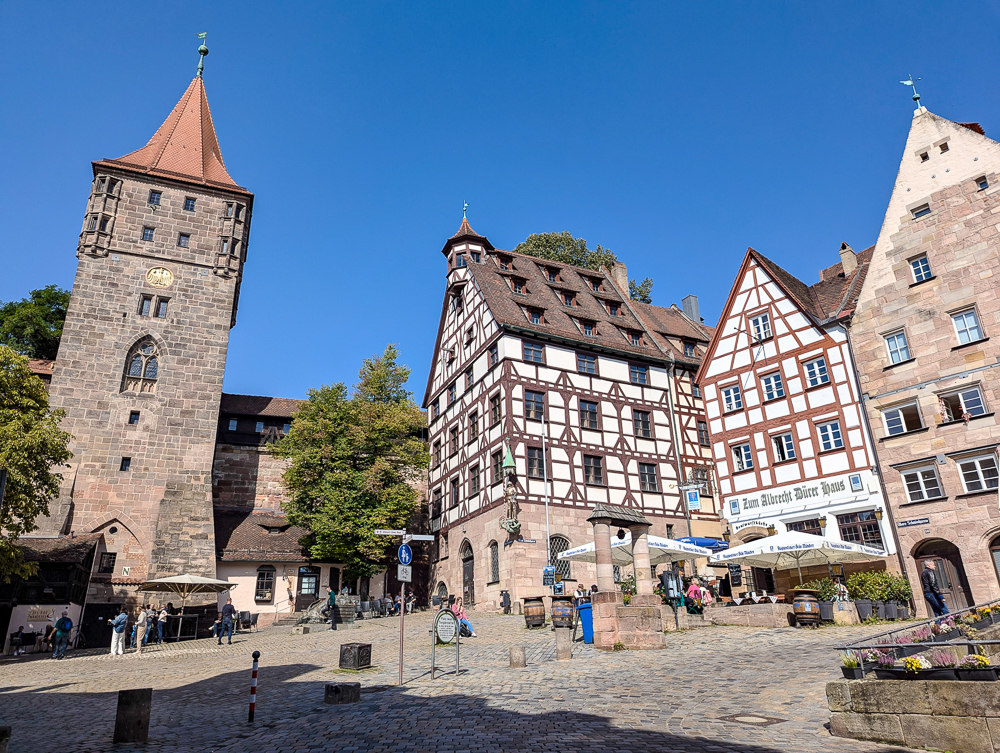
Where to stay in Nuremberg
Here are a few great suggestions for where to stay when looking to explore the WWII sites in Nuremberg. (I’ve included them in the map at the top of this post so you can get an idea of where they’re located.)
Hotel Karl August – This is where I stayed on my September 2024 visit and I highly recommend it. The location is perfect and I could easily walk just about everywhere. It’s surrounded by plenty of restaurants, has the friendliest staff, and has a huge attached parking garage you can fit even a large car into without breaking a sweat.
Book your room at the Karl August here
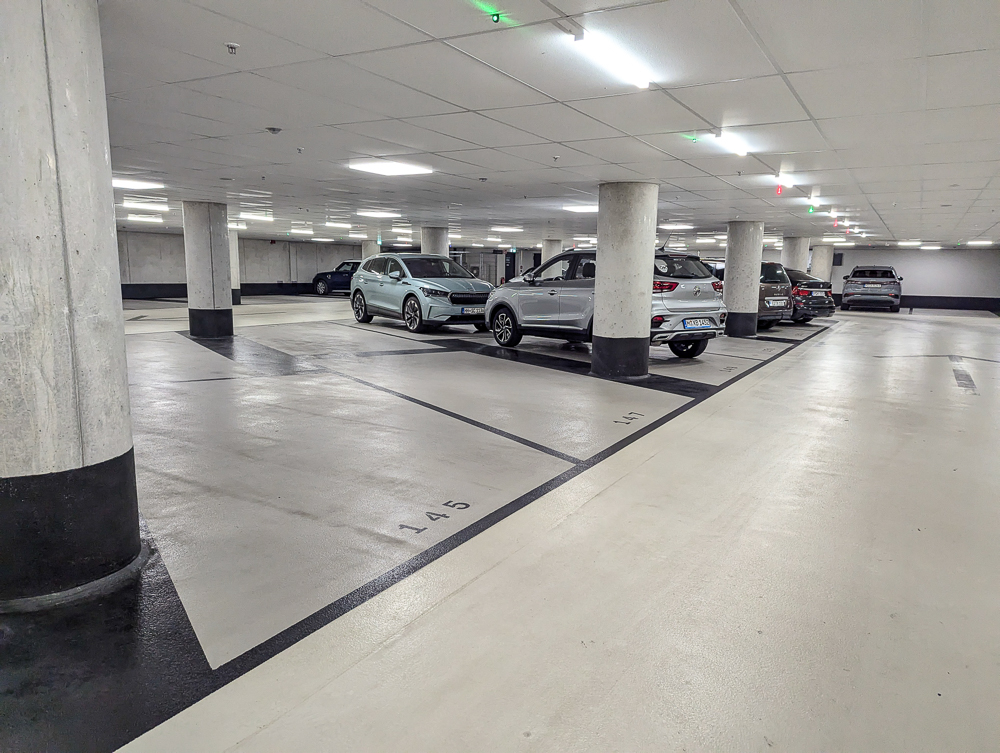
Riverview Apartments – Apartment-style rooms, perfect location along the river, excellent reviews, and a special note that previous guests say the description and photos for this property are very accurate, so that’s something!
Hotel FIVE – Another perfect central location, excellent reviews, air conditioning, and its own restaurant.
Melter Hotel & Apartments – Great location in the center of town, beautiful modern hotel with large apartment-style rooms and excellent reviews.

More info for your visit to Nuremberg
- Hotels: Find great places to stay on Booking.com (my go-to). Expedia and Hotels.com are worth checking too.
- My personal recommendation: I stayed at the Hotel Karl August and it was perfect.
- Rental cars: Check out the best local rental car deals here.
- For more local tours, check out all the options from Viator and Get Your Guide.
- Don’t forget a Germany guidebook and this must-have Germany customs and culture guide!
- Want more? See all my Germany posts here.
Like this post? Have questions about visiting the WWII sites in Nuremberg? Let me know in the comments below. Have a great time in Germany!

Save this info, pin this image:

